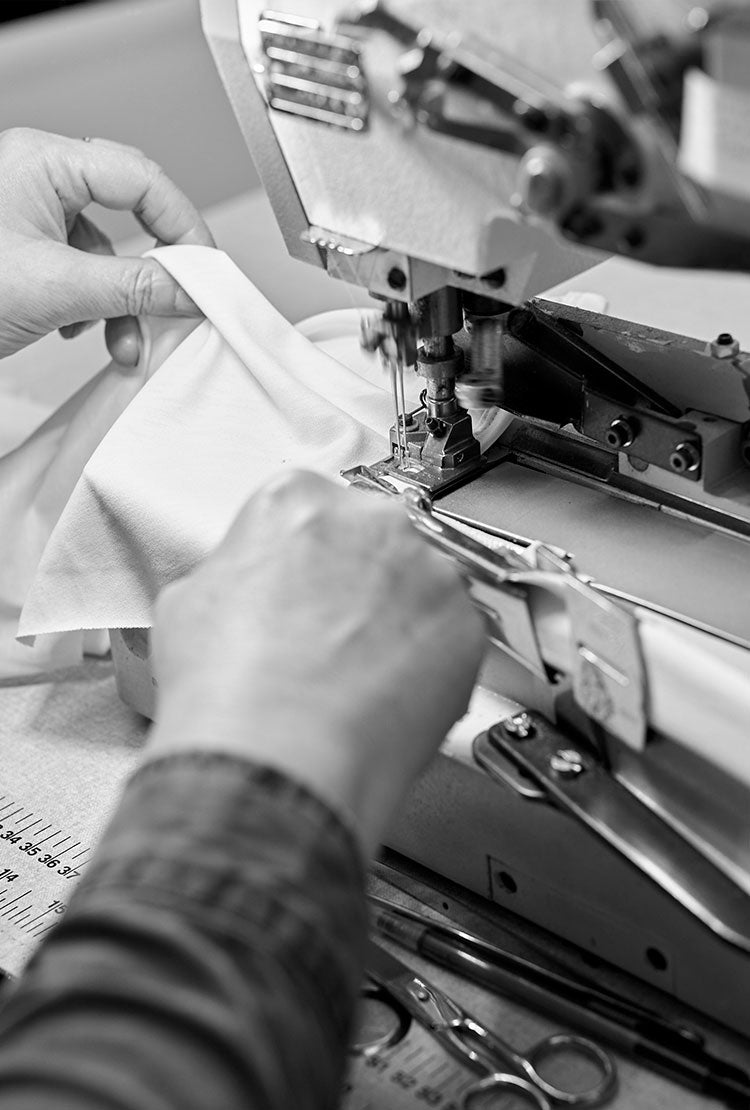Cashmere Care Guide
Cashmere wool is exceptionally soft and comfortable but it is also very durable if looked after properly. Here is a guide to help you look after your cashmere garments so they keep their unique softness for years to come.
 |
What is Cashmere?
Cashmere is the finest wool available. It comes from Cashmere goats which are bred by nomadic herders in the mountains of Inner Mongolia. To withstand the bitterly cold temperatures these hardy animals grow winter undercoats of exceptionally fine wool. It is the white hairs of this undercoat, the softest of them all, that we use for our knitting though some producers will use the harsher dark hairs too.
Our partners, Todd and Duncan, ensure they source all their wool from goatherds who show the highest standards of animal welfare and sustainable grazing practices. They also actively work to protect the traditional nomadic lifestyles of the herders themselves. They’ve been spinning yarn on the banks of Loch Leven in Scotland since 1897 and use the soft, natural loch water to open the fibres and make the yarn even softer against the skin. It is then knitted into the final piece in the Scottish Borders by one of the oldest family-run knitters in the world.
The finished garment is the result of exceptional craftsmanship and, if cared for correctly, will last a very long time.
How to wash and dry cashmere
It’s better both for the garment and the environment to wash your cashmere only occasionally. When you do, remember to check the care label as each piece may vary.
- Always wash your cashmere by hand.
- Start by turning it inside out as this will help preserve the outside colour.
- Fill a sink or large bowl with cool water. Make sure you clean the bowl beforehand so there is no leftover residue. Add a splash of specialist wool detergent (don’t use softeners, bleach or Bio detergents), dissolve it in the water and submerge the garment.
- Gently rinse in the water before removing.
- Our cashmere can be dry-cleaned if stubborn stains cannot be removed.
- To dry, gently squeeze out any excess water.
- Lay it flat on a bath towel, roll up the towel and press on it - avoid wringing or twisting as this may misshape it.
- Then lay it out flat on a rack to dry fully, removing any folds or creases where possible.
- Do not: tumble dry; hang on a line as it may become stretched; or dry it in direct sunlight or near heat as it may cause shrinking.
Ironing
Cashmere should not need to be ironed as it is naturally wrinkle-resistant. If it is unavoidable, use the iron’s wool setting and gently steam it before lightly pressing.
Removing Pilling
Pilling is when the wool forms bobbles in areas subjected to friction. It is not a sign of bad quality but a result of the long wool fibres that make the knit. You can remove them easily by hand but it is important to avoid de-pilling precious pieces too often as this will thin the fabric over time.
How to store cashmere
Store your knitwear folded and avoid hanging it for long periods as this may stretch it. Make sure they are clean and dry when you put them away too as moisture will encourage moths. For long-term storage, use an airtight plastic bag or container and only ever use natural moth repellents. Lavender, rosemary or cedar have a nicer odour than traditional mothballs.




























































